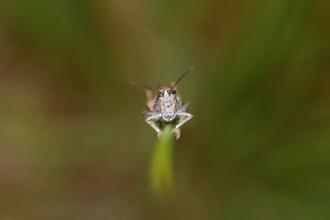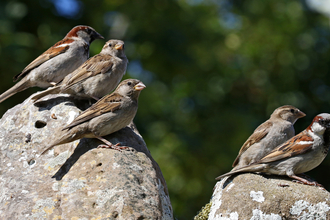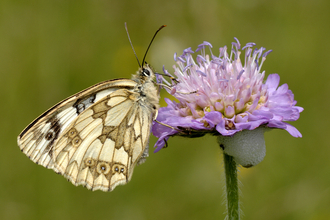There's a continuous whirring noise as I walk through a wide grassy margin at the side of a local arable field. It sounds a little like electrical interference, like when you walk under a pylon and you can sometimes hear a buzzing noise overhead. Except there are no pylons or power lines. I stop. I listen. I move towards the sound. It stops. I stop. It starts. I move towards it. It stops. I stop. It starts. This goes on for some time until eventually I spy a movement and there, amongst the grasses, is a Roesel's bush-cricket.
It's simply not (a) cricket
Speckled bush-cricket by Wendy Carter
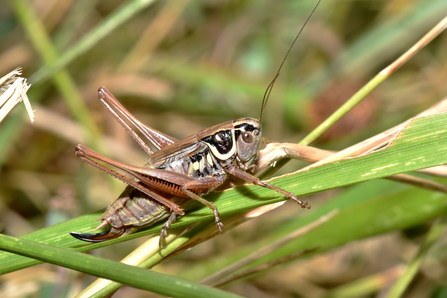
Roesel's bush-cricket by Gary Farmer
This unmistakeable bush-cricket has a green inverted horseshoe-shape behind its eyes and enormously long antennae, just like other bush-crickets. It's a relative newcomer to Worcestershire, having arrived around 20 years ago, it's push northwards being aided by our warming climate. I stand and watch it for a few moments; its wings quickly rubbing together to make the noise - is it calling for a mate or confirming its territory to another cricket? I can't see another cricket nearby so I assume it knows (a lot) more than I do.
The song of crickets and grasshoppers is called stridulation and is created by the rubbing together of wings in crickets and a hind leg and a wing in grasshoppers. If you can imagine playing a washboard - strumming a series of pegs or corrugations with a scraper - you've pretty much worked out how they make the noise. Just like birds, each species has a different song and some sing louder than others. Compare the Roesel's continual whirring above with that of a meadow grasshopper below, for example...
It's usually males who sing loudest because, you've guessed it, song is used as part of courtship. Again, just like birds, they have different songs for different moments. If I'd have been more tuned in to the language of the Roesel's bush-cricket that I was watching, I'd have known whether there was a female or a male nearby without having to look. A song to woo a female is different when she's alone compared to when the male is competing with other males who are also serenading her. Some crickets and grasshoppers even combine their song with some dancefloor moves.
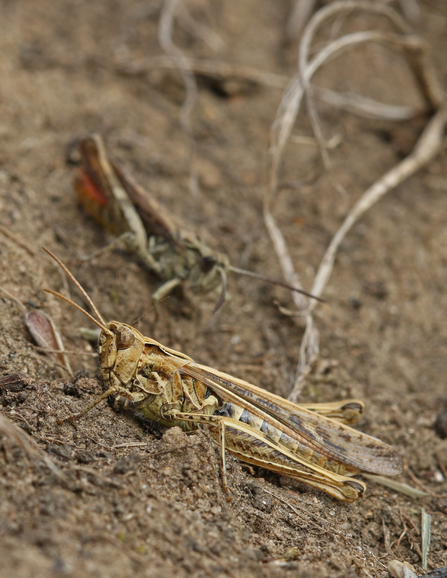
Field grasshoppers by Wendy Carter
The legs don't just come in useful for singing. They're large hind legs accommodate muscles that allow the individuals to jump considerable differences. If you spot one and it leaps away, you'll often struggle to spot it again.
You can find out more about how to identify and where to spot some of Worcestershire's more common crickets and grasshoppers in our gorgeous grasshoppers and beautiful bush-crickets feature. A quick checklist of what to look for, however, is...
- crickets have long antennae whereas grasshoppers have much shorter antennae
- listen for different songs so you can begin to identify them without catching sight of them - you can download the iRecord grasshopper app onto your phone to help with this
- field grasshoppers are our most common garden grasshopper (look amongst long grass) and speckled bush-crickets are often found in gardens too (look in your shrubs)
- oak bush-crickets are also known as bathroom crickets because they're often attracted to lights through open windows...look out for southern oak bush-crickets that are on their way northwards because of climate change
- hunt in low vegetation in hedgerows and woodlands to catch sight of dark bush-crickets


